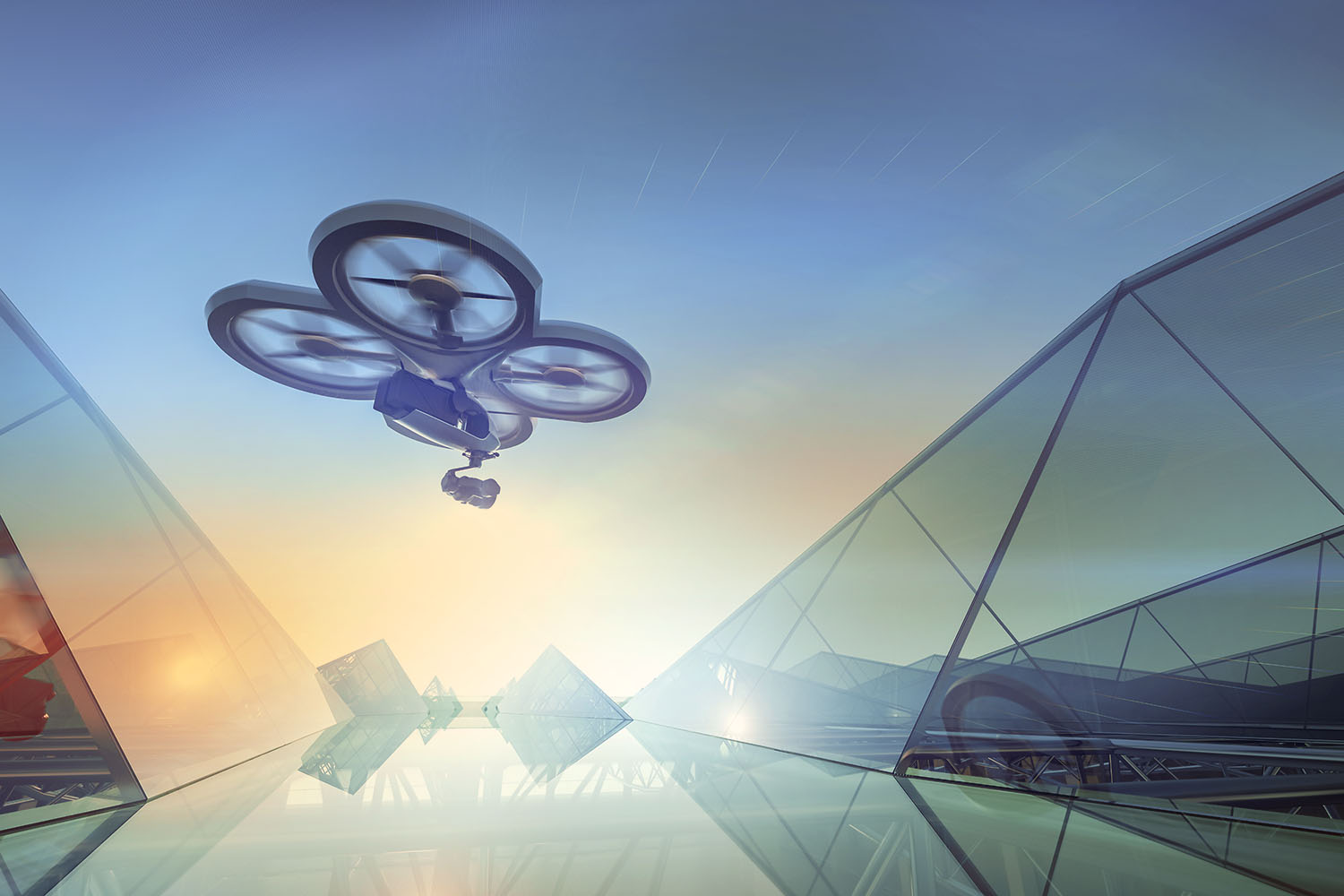Using drones in health and safety inspections
Published on 13th January 2022
Safety Assessment Federation guidance considers the use of drone technology and data to support examinations and inspections of various types of plant and equipment

Drone technologies can assist inspections that are dangerous, expensive or disruptive to carry out. Drones can allow companies to easily access hard to reach or previously inaccessible areas of their plant or equipment.
Guidance produced by the Safety Assessment Federation (SAFed) provides general guidelines and conditions for the use of drone technologies during health and safety inspections. It also provides case studies of various sectors testing the use of drones in their inspections, and compares the results of using drones for these activities and the usual direct methods of inspection.
For businesses who might be considering using drones to assist their inspections, SAFed recommend ensuring that the total operational impact of using drone technology is justified. They recommend that drones will initially be most applicable in the assessment of structures, joints and weldments, mechanical assembly stability and security, and mechanical component condition and security.
From the case studies in the guidance, SAFed is keen to emphasise two aspects that are necessary to ensure a detailed and thorough examination:
- First, it is important to ensure that the drone operator is experienced and has some prior understanding of the site and equipment that will be inspected.
- Second, that a competent person, who is experienced in undertaking the usual physical examination, is able to review the results of the drone inspection and satisfy themselves with the detail obtained by the drone in order to confirm the integrity of the equipment.
Significance of the guidance
New, automated tech solutions such as drones are at their best when applied to dull, dirty or dangerous tasks which incur expense and create risk for businesses and their employees. While there will still need to be a degree of physical human scrutiny to support and verify the data collected by a drone, the technology can be used to enhance and supplement a thorough examination or inspection to reduce the time or risk involved with current techniques.
While the SAFed guidance is fairly limited in its scope, it shows that businesses in industries that might traditionally have been slow to adopt new technologies are beginning to recognise the potential for drones and other robots to assist in a variety of use cases and industrial applications.
There are numerous pieces of legislation in the UK and EU that require companies to undertake thorough examination and inspections of certain equipment, such as the Lifting Operations and Lifting Equipment Regulations 1998, which requires thorough examination of lifting equipment by a competent person. Businesses also have a general duty to take all reasonably practicable steps to reduce risks to the health and safety of its employees and those who may be affected by their undertaking.
This guidance is significant as a definitive publication that can be applied to facilitate the use of drones to comply with these requirements. If a relatively cheap technology can undertake what could be a dangerous inspection, businesses may struggle to show that have taken all reasonably practicable steps to reduce risk if they choose to continue with direct inspections. Companies under regulatory obligations can now be assured that there are not taking an unwarranted risk when they explore the use of drone technology to help undertake thorough examinations and inspections. In fact, their use may reduce risks to both their employees and their business.
Drones can provide high quality images of the various equipment under inspection, as well as video records of an entire inspection that may not usually be recorded on a physical inspection. This imagery can be included in an inspection report and can lead to a more detailed investigation.
Sectors that could benefit
The SAFed guidance sets out certain types of equipment that could benefit from the use of drone technology during their inspections. These include: work equipment, electrical systems and equipment that is subject to deterioration that could lead to employees exposed to risks or hazards, and high profile equipment located on a site of a major accident. The guidance notes that drone technology is not currently deemed suitable for the full functional assessment of drive train and mechanical machinery assemblies.
While this may be a fairly limited scope for this technology, the possibilities for the use of drone technologies in inspections is arguably endless. Rail, energy and telecoms industry businesses will all benefit from the use of drones to inspect their infrastructure, such as power lines, masts, and remote installations.
Osborne Clarke comment
Drone technology is likely to become an invaluable asset in the completion of thorough inspections and examinations of a vast range of types of plant and equipment in the future. It will allow high quality checks of areas that were previously dangerous or complicated to access to be examined with ease, while minimising disruption and expense. SAFed's guidance is a step towards wider acceptance of this technology by regulators and business.
Looking ahead, drones and their software will become increasingly sophisticated. Drone manufacturers are already exploring the potential for drones to create digital twins of industrial plant and equipment, facilitating millimetre accurate 3D models which would enable inspections at a level of detail previously impossible to achieve.
This Insight was produced with the help of Josephine O'Dowd, trainee solicitor.







